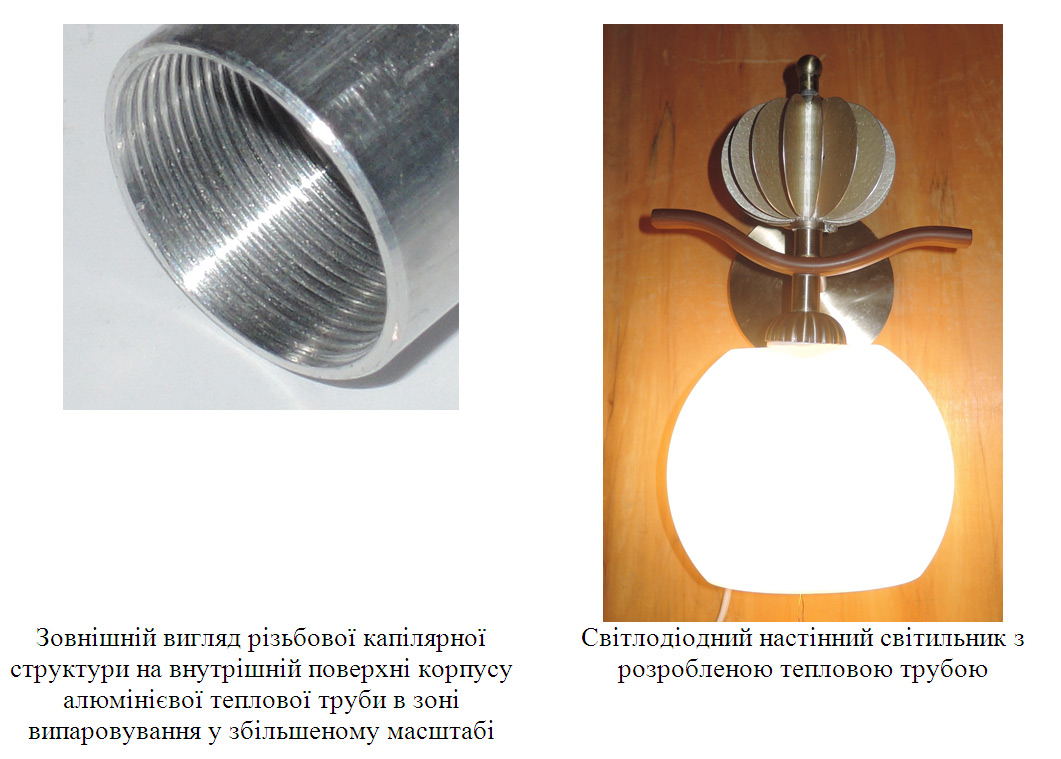Development and research of aluminum heat pipes with threaded capillary structure for cooling LED lighting devices.
For lighting in the world, 19 to 22% of the generated electricity is consumed. The introduction of energy-saving technologies in lighting systems will provide significant energy savings and improve the environmental state by reducing emissions of thermal power plants in the environment. One way to save energy in lighting is to switch to LED lighting. Light output of LED light sources is 10 times higher than the light output of incandescent lamps and 2 times - compact fluorescent lamps containing mercury. However, when creating LED lighting products, the problem arises of ensuring a normal thermal regime of LED light sources.
Solve this problem by using heat pipes whose thermal conductivity exceeds the therma conductivity of copper by hundreds of times. At the same time, the technology of manufacturing copper heat pipes with metal fibers or powder capillary structures is complicated. In addition, they have a significant mass. Therefore, it is promising to use lighter and cheaper aluminum heat pipes in LED devices. The best aluminum heat pipes with capillary omega-shaped grooves were developed for space purposes and are costly, since the capillary structure is obtained by extrusion using high-temperature metallurgical equipment.
In this research work, new design and technological solutions for the creation of gravitational aluminum heat pipes with a threaded capillary structure, which is made in the form of a metric thread on the inner surface of the shell of the heat pipe in the evaporation zone, were first developed and investigated. Such heat pipes, in contrast to existing aluminum heat pipes with omega-shaped grooves, are more technologically efficient in production, which makes it possible to manufacture them in the conditions of existing small domestic enterprises, make their production cheaper and increase competitiveness.
As a result of the work, sketch design documentation for a heat pipe with a threaded capillary structure, a heat flux simulator based on diamond-like films and an LED = lamp with a developed heat pipe was developed. Five experimental samples of heat pipes with heat carriers were created: chladone 141b, n-pentane and isobutane. Experimentally obtained: new graphical dependences of the heat transfer coefficient in the evaporation zone and in the condensation zone on the saturated vapor pressure at a constant density of the heat flux, and also on the dependence of the heat transfer coefficient in the evaporation zone and in the condensation zone on the
density of the heat flux at constant saturated vapor pressure. Graphical dependencies are obtained: the thermal resistance from the slope of the heat pipe, the temperature drop across the heat pipe from the transmitted heat flux, the degree of uniformity of the temperature field and the value of the maximum heat flux transferred by the heat pipe are determined.
Based on the obtained dependencies, an engineering methods for calculation and recommendations for the introduction of aluminum heat pipes with threaded capillary structure into LED lighting devices have been developed.

| Attachment | Size |
|---|---|
| 292.16 KB |




